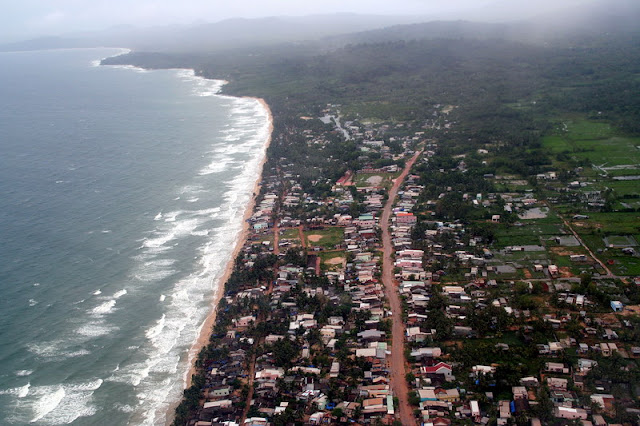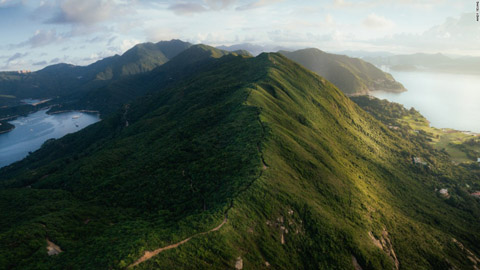Phu Quoc Island Vietnam
Overview about Phu Quoc
Phu Quoc island is the largest island in Viet nam. Phu Quoc and nearby islands, along with distant Thổ Chu Islands, is part of Kiên Giang Province as Phú Quốc District, the district has a total area of 574 square kilometres (222 sq mi) and a permanent population of approximately 103,000. Located in the Gulf of Thailand, the district of Phú Quốc includes the island proper and 21 smaller islets. The district seat, Dương Đông, is located on the west coast, and is also the largest town on the island. The economy is centered on fishing, agriculture and a fast-growing tourism sector.
Geography of Phu Quoc
Phu Quoc lies south of the Cambodian coast, west of Kampot, and 40 km west of Ha Tien, the nearest coastal town in Vietnam. Roughly triangular in shape the island is 50 kilometres (31 mi) long from north to south and 25 kilometres (16 mi) from east to west in the north at its widest. It is also located 62 nautical miles (115 km; 71 mi) from Rạch Giá and nearly 290 nautical miles (540 km; 330 mi) from Laem Chabang, Thailand.
A mountainous ridge known as "99 Peaks" runs the length of Phu Quoc, with Chúa Mountain being the tallest at 603 metres (1,978 ft).
Phu Quoc Island is mainly composed of sedimentary rocks from the Mesozoic and Cenozoic age, including heterogeneous conglomerate composition, layering thick, quartz pebbles, silica, limestone, riolit and felsit. The Mesozoic rocks are classified in Phu Quoc Formation. The Cenozoic sediments are classified in formations of Long Toan (middle - upper Pleistocene), Long My, (upper Pleistocene), Hau Giang (lower - middle Holocene), upper Holocene sediments, and undivided Quaternary.

History of Phu Quoc
Phu Quoc has been a sleepy historical backwater for most of its history. However, in the 20th century, it was involved in a series of high-profile events:
The French missionary Pigneau de Behaine used the island as a base during the 1760s and 1780s to shelter Nguyễn Ánh who was hunted by the Tây Sơn army.
An 1856 record mentions the island: "King Ang Duong (of Cambodia) apprise Mr. de Montigny, French envoy in visit to Bangkok, through the intermediary of Bishop Miche, his intention to yield Phu Quoc to France."Such a proposition aimed to create a military alliance with France to avoid the threat of Vietnam on Cambodia. The proposal did not receive an answer from the French.
While the war between Vietnam, France, and Spain was about to begin, Ang Duong sent another letter, dated November 25, 1856, to Napoleon III to warn him on Cambodian claims on the lower Cochinchina region: the Cambodian king listed provinces and islands, including Koh Trol កោះត្រល់ (Phu Quoc), being parts of Vietnam for several years or decades (in the case of Saigon, some 200 years according to this letter). Ang Duong asked the French emperor to not annex any part of these territories because, as he wrote, despite this relatively long Vietnamese rule, they remained Cambodian lands. In 1867, Phu Quoc's Vietnamese authorities pledged allegiance to French troops just conquering Hà Tiên.
In 1939, the Governor-general of French Indochina, Jules Brévié drew a line to delimit the administrative boundaries for islands in the Gulf of Thailand: those north of the line were placed under Cambodia protectorate; those south of the line were managed by the colony of Cochinchina. Brévié made the point that the decision merely addressed administrative task, and that no sovereignty decision had been made. As a result, Phu Quoc remains under Cochinchina administration. Later, Cochinchina's sovereignty was handed over to the State of Vietnam and remained so after France left.
After Mainland China fell under the control of the Chinese Communist Party in 1949, General Huang Chieh moved 33,000+ Republic of China Army soldiers mostly from Hunan Province to Vietnam and they were stationed at Phu Quoc. Later, the army moved to Taiwan in June 1953.
During the Vietnam War the island housed South Vietnam's largest prisoner camp (40,000 in 1973), known as Phú Quốc Prison.
On May 1, 1975, a squad of Khmer Rouge soldiers raided and took Phu Quoc, but Vietnam soon recaptured it. This was to be the first of a series of incursions and counter-incursions that would escalate to the Cambodian–Vietnamese War in 1979. Cambodia dropped its claims to Phu Quoc in 1976. But the bone of contention involving the island between the governments of the two countries continued, as both have an historical claim to it and the surrounding waters. A July 1982 agreement between Vietnam and The People's Republic of Kampuchea ostensibly settled the dispute, but since Vietnam's withdrawal from Cambodia, the agreement has not been recognized and the island is still the object of irredentist sentiments.The opposition Cambodian National Rescue Party still claims the island as Cambodian territory.
Some nice places of Phu Quoc
Long Beach is the star and it is bearing the brunt of the boom. In the dry season, the 20-plus kilometre stretch of yellow sand that runs from Duong Dong town down the central west coast of the island is the liveliest beach of the island, the entire length offering beachfront accommodation and places to play, laze and dig into seafood while digging your feet in the sand. Being one of the few beach destinations in Vietnam with a western coast, at the end of the day everyone gathers here to worship the memorable sunset.
Enjoy Phu Quoc’s unspoiled beaches … Photo taken in or around Phu Quoc Island, Vietnam by Cindy Fan.
Enjoy Phu Quoc’s unspoiled beaches … (that is a joke) Photo: Cindy Fan
If beach bustle isn’t your scene, it’s possible to find that wild, unspoilt feeling that first drew travellers here. Phu Quoc’s freshly paved arterial roads coupled with dramatic scenery make it a fantastic place to explore by motorbike. Ong Lang, Bai Vung and Bai Sao are just a few of the beaches you should consider staying at or at least visit. Anyone with a window seat on the plane will be struck by how staggeringly green the island is. More than half of it is national park and in 2006 the island was included in the UNESCO designation of Kien Giang as a World Biosphere Reserve. The north and east coast remains relatively untouched by tourism. If you want to experience what the island was like just 10 years ago, head out on the dirt roads that will take you past lush jungle and the island’s many famed pepper plantations.
But surf and sand is what you’re probably here for and whether you’re after PADI certification, to find Nemo through a snorkel mask or just want to splash around, a day on the water is a must. Better yet, charter a boat to discover paradise in the An Thoi islands, an archipelago of 15 islands and islets off the southern coast where you’ll find secluded coves, soft white sand, azure waters, coral reefs and no people.
If for some reason you get bored of the beach there are some minor sights to hold your interest such as pearl farms, a night market packed to the gills with seafood, an old prison, Suoi Tranh stream and a museum – they’re easy to find. You can also follow your nose to the fish sauce factories in town.
Some views remain unspoiled. Photo taken in or around Phu Quoc Island, Vietnam by Cindy Fan.
keyword: niceplaceworld, nice place on world, nice place, beatutiful place, nice scene, nice scenery, beautiful scene, travel, travel vietnam, beautiful vietnam, https://niceplaceworld.blogspot.com/







No comments:
Post a Comment